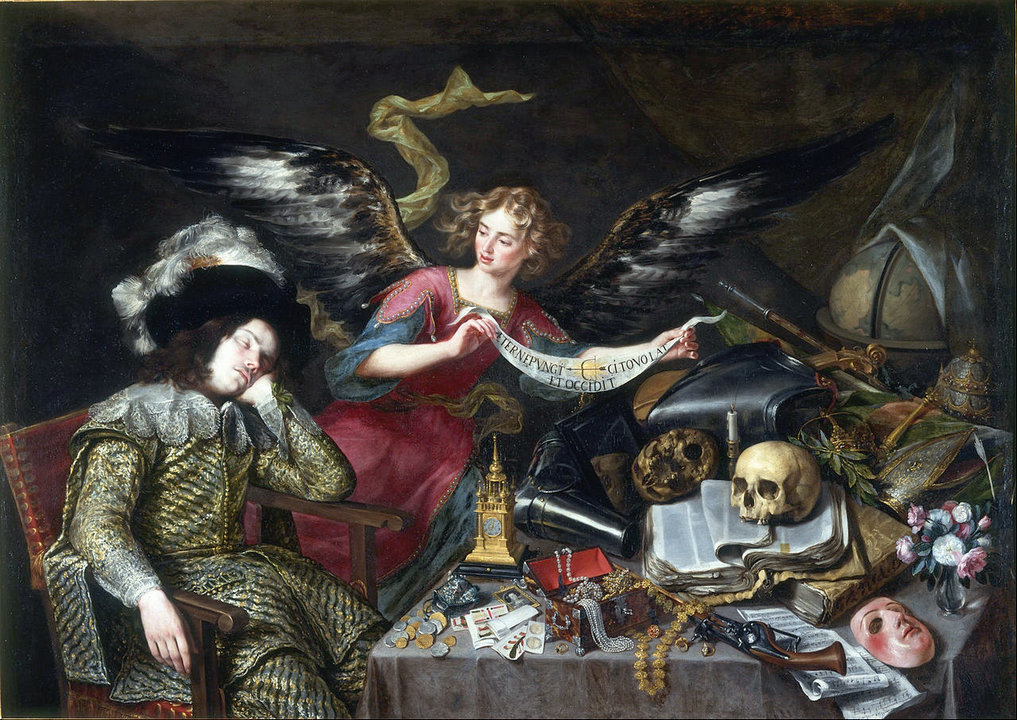Royal Academy of Fine Arts of San Fernando, Madrid, Spain


The Royal Academy of Fine Arts of San Fernando (Real Academia de Bellas Artes de San Fernando RABASF) is an institution integrated in the Institute of Spain. It was created by Royal Decree of 12 of April of 1752 and its soothes is in Madrid (Spain).
The permanent collection of the Academy includes masterpieces of Spanish, Italian and flamenco art. Goya was a member since 1780 and the Museum preserves 13 paintings of his hand highlighting the two Self-portraits, the Bullfight, the portraits of Moratín, Juan de Villanueva, the actress La Tirana and the famous Carnival scene known as Burial of the Sardine.
Its origins are related to the Enlightenment. In 1744 a Preparatory Board was set up in the rooms where the First Sculptor of the King, Juan Domingo Olivieri, was the principal promoter of his formation in the New Palace. From 1741 Olivieri maintained a academy of sculpture in its rooms and it held the position of general manager when creating the new institution. Its first statutes were approved in 1747, being predominated in them the nobiliary estate. In the same year, King Ferdinand VI, who had remained on the fringes of creation, appointed his personal sculptor, Felipe de Castro, recently returned from Italy, “extraordinary master director of sculpture at the Academy”, so that the new institution He became thus dependent on the Crown. The official creation dates from April 12, 1752, being placed under the patronage of King Ferdinand VI, who called it the Royal Academy of the Three Noble Arts of San Fernando. In 1753 three Italian artists shared their address: Olivieri, Corrado Giaquinto and Juan Bautista Sachetti. The definitive statutes were approved in 1757, entrusting to the Academy the promotion and protection of the Arts. Its main editor was Felipe de Castro, who suppressed the aristocratic character of the first statutes, entrusting the direction of the Academy to the artists.
Included in the permanent collection of the museum are works such as the Agnus Dei and the Mercedarian Friars of Zurbarán; A Maria Magdalena de Ribera, signed in 1636; The only Arcimboldo preserved in Spain; The Riva degli Schiavoni in Venice, signed by Leandro Bassano; The splendid picture the Dream of the Knight of Pereda; The Old Testament scene of Susanna and the Elders of Rubens; The Marquesa de Llano de Mengs, Van Loo’s painting of Venus, Mercury and Love made in 1748; The 19th century is represented by Spanish art with the portraits of Vicente López, the magnificent portrait of Manuel Godoy, Prince of Peace by José de Madrazo or the Portrait of Isabel II by Federico de Madrazo. There are also other trends such as the romanticism of Esquivel and other genres such as the landscapes of Haes. The twentieth century deserves special attention as it offers us the work of current scholars, allowing us to have a vision of contemporary art. This way you can follow all artistic trends of the century with Impressionist works by Sorolla and Cecilio Plá, Sotomayor regionalism, Vázquez Díaz’s portraits and landscapes by Benjamín Palencia, Lozano, Genaro Lahuerta, etc …
The museum also offers an important collection of sculpture that shows the evolution of Spanish sculpture from the 17th century to the present day, with such outstanding examples as the San Bruno of Manuel Pereira or La Dolorosa de Pedro de Mena; Portrait of Fernando VI and Portrait of Dona Bárbara de Braganza, reliefs of Gian Domenico Olivieri; The Portrait of Alfonso Clemente de Aróstegui by Felipe de Castro; Felipe V on horseback by Roberto Michel and Felipe V on horseback by Manuel Francisco Álvarez de la Peña; The set of the Decapitation of the Innocents made by José Ginés for Carlos IV; The Portrait of Antonio Teixeira Lopes by Mariano Benlliure and Gil, Sensitive by Miguel Blay; Picasso’s wife’s head; Academy of Pablo Gargallo. Of great interest are also the works of students of the Academy made with reasons of General Contests and scholarships, as well as the drainage room with an important collection of works in plaster.
In the rooms of the Museum you can also see works acquired through the Guitarte Legacy, such as the Vanitas by Michel Bouillon, made in 1668, the Self-portrait by Francisco Bayeu; The magnificent Still Life of Lemons by Juan de Zurbarán, the Head of Apollo attributed to Thorwaldsen, the Painter in his study of Magnasco, cubist painting through the Still Life with fruit, bottle and newspaper of Juan Gris, part of the set of engravings of Picasso The Vollard Suite etc.